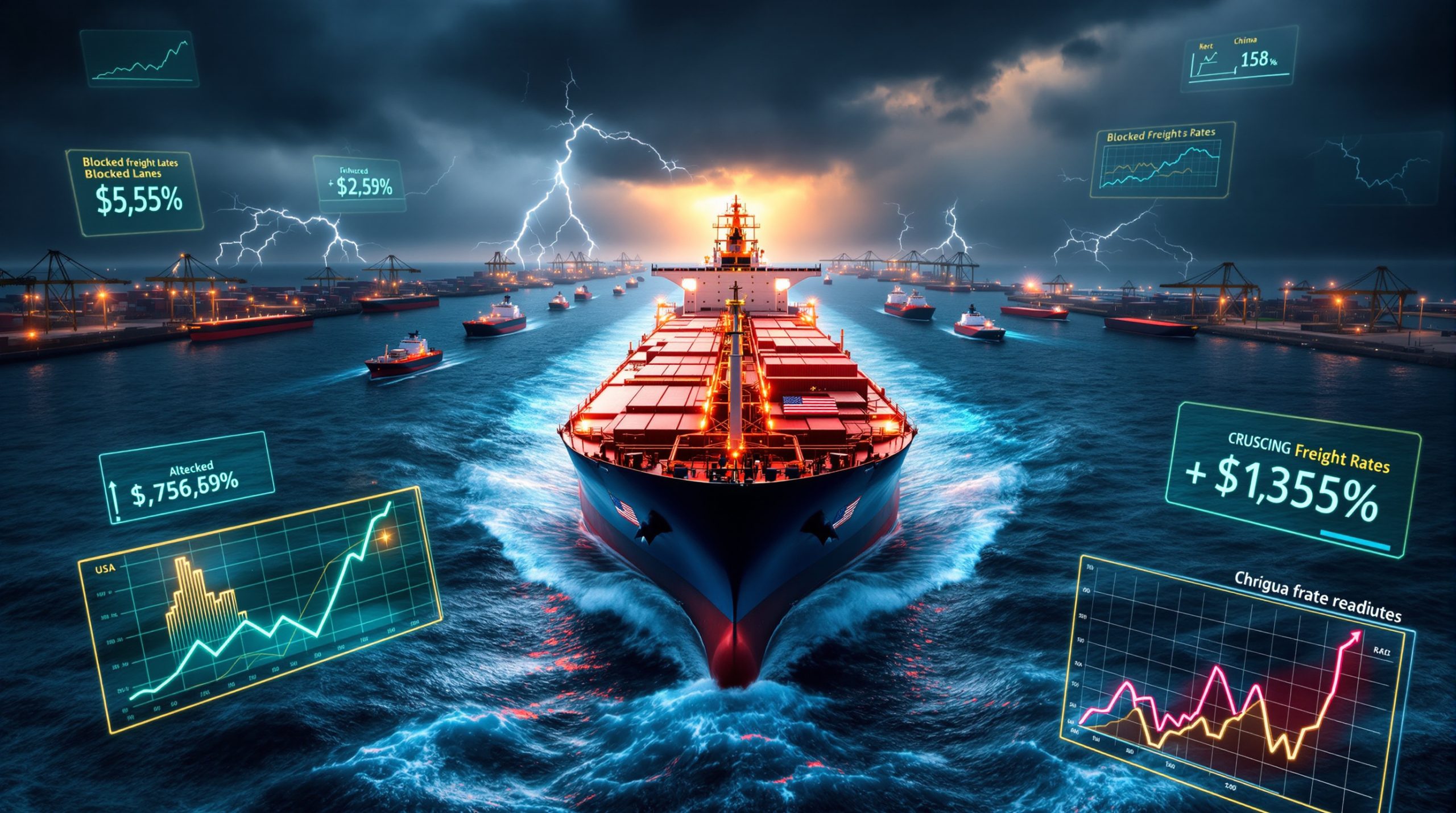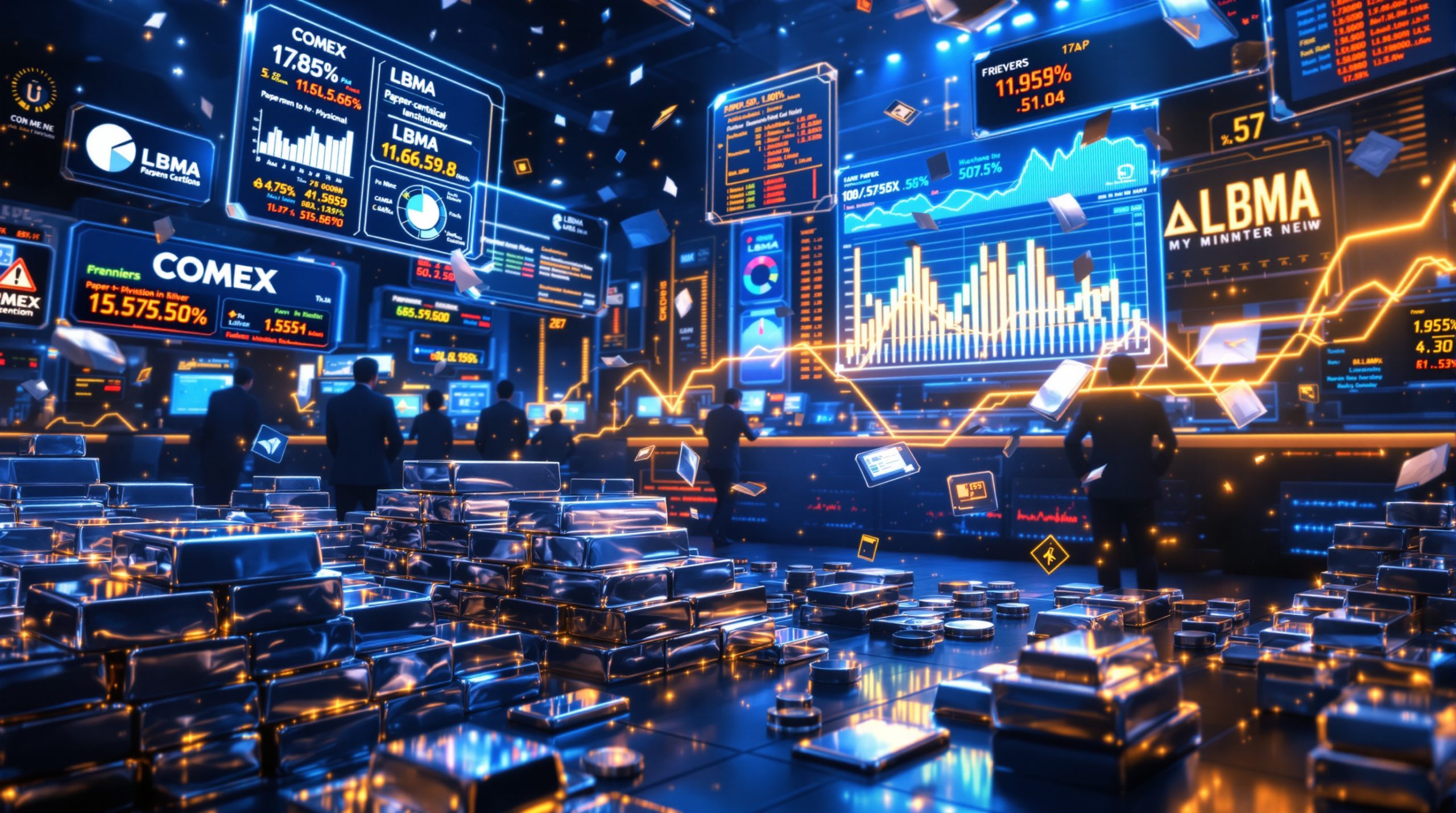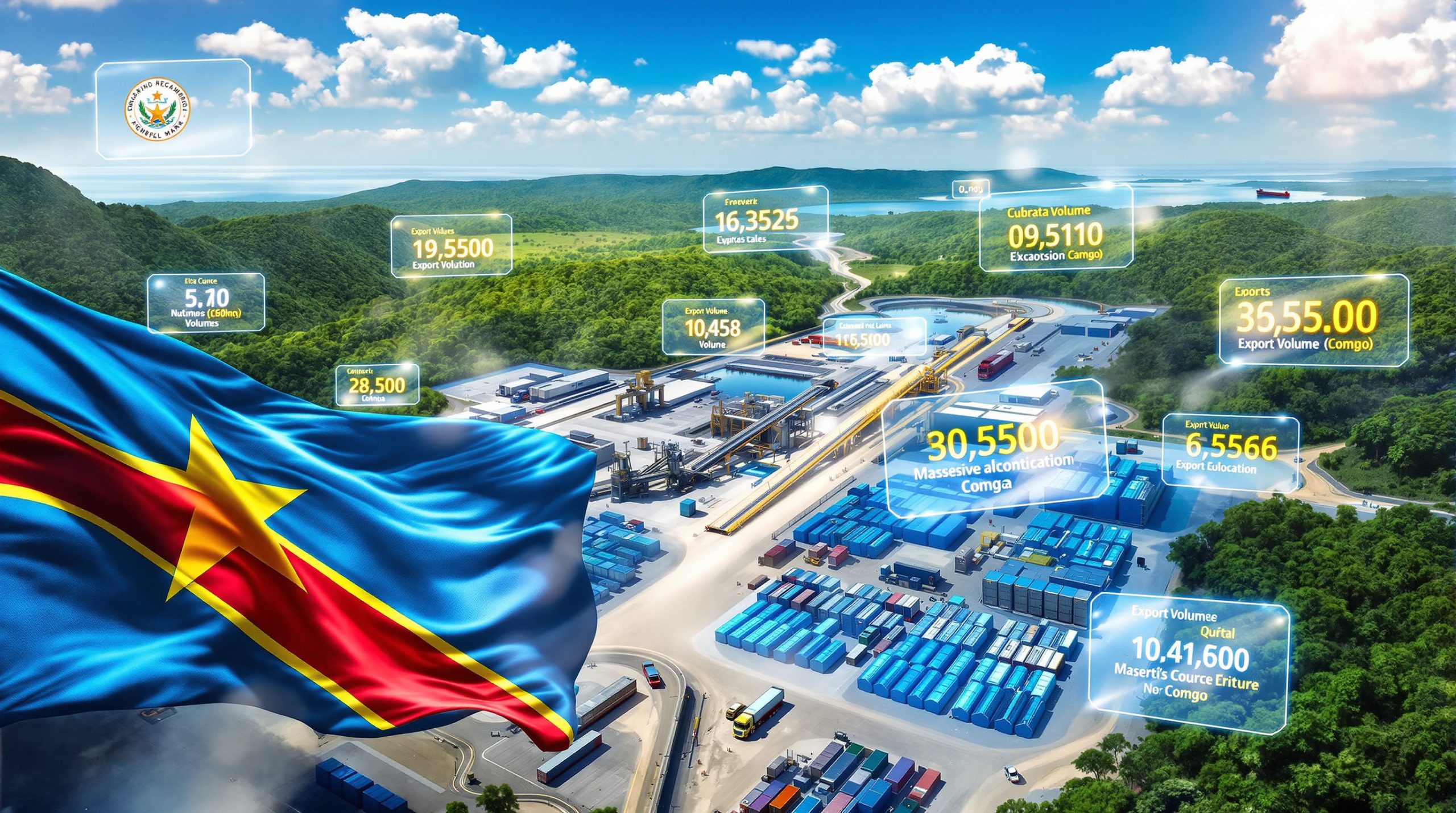What is Eurasian Resources Group (ERG)?
Eurasian Resources Group (ERG) stands as a mining powerhouse headquartered in Luxembourg, with operations spanning 15 countries across four continents. The company specializes in producing copper, cobalt, aluminum, and iron ore, positioning itself as a significant player in the global mining landscape. A distinctive feature of ERG's ownership structure is the 40% stake held by the Government of Kazakhstan, highlighting the company's strategic importance to the Central Asian nation.
The company's current configuration emerged following a substantial $4.5 billion privatization deal in 2013, when three founding investors partnered with the Kazakh government to take the entity private. This transaction marked a pivotal moment in ERG's corporate history, establishing the ownership framework that continues to govern the organization today.
Under the leadership of Chairman and CEO Shukhrat Ibragimov, ERG has maintained its position as one of Kazakhstan's most valuable corporate assets. The company's extensive operations include significant copper and cobalt mining facilities in Africa, with the Metalkol RTR project in the Democratic Republic of Congo producing approximately 120,000 tonnes of copper and 11,000 tonnes of cobalt in 2024 alone.
ERG's production capabilities are impressive by global standards, with annual outputs reaching 650,000 tonnes of copper, 25,000 tonnes of cobalt, and 13 million tonnes of iron ore. This production volume places ERG fifth worldwide for cobalt output, a critical mineral shortages essential for electric vehicle batteries and renewable energy technologies.
Industry analyst Dmitry Ivanov notes, "ERG's Luxembourg base provides strategic access to European capital markets while maintaining strong ties to Kazakhstan's resource corridors." This dual positioning allows the company to leverage both European financial resources and Kazakhstan's abundant mineral wealth.
What Was the Reported Acquisition Offer?
In early 2025, reports emerged that American businessman James Cameron had approached ERG with a substantial acquisition proposal valued at $5 billion (approximately €4.36 billion at April 2025 exchange rates). This unsolicited offer was reportedly communicated through a formal letter addressed directly to ERG's board of directors.
According to industry sources, Cameron claimed that Goldman Sachs was engaged in preliminary discussions to serve as the financial advisor for the proposed transaction. This suggestion of Goldman Sachs' involvement was interpreted by some market observers as an attempt to lend credibility to the bid. Investment banker Fatima Al-Maktoum observed that "Goldman's potential involvement signals confidence in Kazakhstan's critical minerals geopolitics."
The proposed financing structure for the acquisition reportedly consisted of a 30% equity component and 70% debt arrangement, similar to Rio Tinto's 2023 lithium acquisition which utilized a 65:35 debt-to-equity ratio. Cameron's equity funding would reportedly be sourced from a diverse consortium including his personal investment, contributions from American investors, Australian mining interests, and Middle Eastern sovereign wealth funds.
Financial analysis of the offer reveals that the $5 billion valuation represented approximately 8.7 times ERG's 2024 EBITDA, considerably higher than the industry average multiple of 6.2 times. This premium valuation suggests Cameron and his backers recognized significant long-term value in ERG's assets, particularly its access to rare earth elements and other critical minerals.
The timing of the offer coincided with increasing global competition for access to critical mineral resources, especially those outside Chinese control. Cameron's background in mining investments remains somewhat obscure, raising questions about his strategic motivations and financial capacity to complete such a significant transaction.
Why Did ERG Dismiss the Acquisition Rumors?
ERG's response to reports of the acquisition offer was swift and unequivocal. CEO Shukhrat Ibragimov issued an official statement categorically denying any ongoing sale negotiations, stating, "Our focus remains executing the board-approved roadmap, not capital restructuring."
This definitive rejection aligns with ERG's recently unveiled strategic plan for 2024-2030, which targets an ambitious 15% compound annual growth rate (CAGR) in production across its portfolio. The company has already committed $2.1 billion specifically for rare earth projects in Kazakhstan through 2028, demonstrating its long-term investment horizon and growth ambitions.
Rather than entertaining acquisition offers, ERG's management has emphasized their commitment to "consistent and sustainable growth" through internal development. The company's board formally approved this strategic direction in late 2024, establishing three core priorities: tripling rare earth output by 2028, achieving net-zero Scope 1 emissions by 2035, and digitalizing 85% of operations to enhance efficiency and reduce costs.
Tangible evidence of this strategic execution can be seen in ERG's recent resource upgrade at the Aktobe complex, where JORC-compliant assessments added 7.2 million tonnes of rare earth reserves to the company's portfolio. This development strengthens ERG's capacity to capitalize on growing global demand for these critical materials.
The timing of ERG's strategic plan announcement, coming shortly before Cameron's reported acquisition offer, suggests the company has clear internal convictions about its independent future. With significant capital already allocated to expansion projects and a detailed roadmap in place, ERG appears determined to maintain its current ownership structure while pursuing organic growth opportunities.
What Makes ERG Strategically Important?
ERG's strategic importance extends well beyond its considerable mining assets. The company sits at the nexus of Kazakhstan's emergence as a critical player in the global commodities insights market, particularly following recent discoveries that established Kazakhstan as the holder of approximately 17% of global rare earth reserves.
These rare earth elements are essential components in technologies ranging from smartphones and electric vehicles to advanced defense systems and renewable energy infrastructure. As global demand for these materials continues to surge, ERG's control over their extraction and processing represents a significant geopolitical advantage for Kazakhstan.
The company has developed proprietary hydrometallurgical processes that achieve remarkable 92% recovery rates for rare earth elements, significantly outperforming industry standards. This technological edge, combined with ERG's extensive resource base, positions the company as a potential counterweight to China's dominance in rare earth supply chains.
Dr. Annette Schmidt, a geopolitics expert, observes that "ERG's metallurgical expertise bridges China's Belt and Road with EU critical material needs." This assessment acknowledges ERG's unique position as both a beneficiary of Chinese infrastructure investments and a potential alternative supplier for European manufacturers seeking to diversify their critical mineral sourcing.
Kazakhstan's ambition to increase rare earth mineral production by 40% by 2028 relies heavily on ERG's operational capabilities and technical expertise. The company controls approximately 60% of Kazakhstan's copper processing capacity and is expected to play an equally dominant role in rare earth extraction and refinement.
The strategic importance of these developments was formalized in a 2024 Memorandum of Understanding between the European Union and Kazakhstan, guaranteeing 35,000 tonnes of annual rare earth exports to European manufacturers. This agreement represents an important diversification of supply for Europe while cementing ERG's role as a key player in global critical mineral markets.
How Does This Connect to Kazakhstan's Mineral Strategy?
Kazakhstan's national mineral strategy positions the country to become one of the top three global holders of rare earth reserves, potentially rivaling China and Brazil in mineral holdings. Recent geological surveys estimate Kazakhstan possesses more than 20 million tonnes of rare earth resources, with substantial portions located within ERG's concession areas.
The Kazakh government has allocated $6.7 billion through its national development fund to support mineral infrastructure projects through 2030. This significant investment demonstrates the country's commitment to transforming these geological resources into economic assets, with ERG serving as the primary corporate vehicle for this ambition.
Kazakhstan's National Geological Survey Director A. Nazarbayev has confirmed that "Kazakhstan aims to capture 15% of global rare earth market share by 2030," representing more than a doubling of the country's current position. Achieving this target would position Kazakhstan as the dominant non-Chinese supplier of these critical materials.
ERG's exploration and development activities are directly aligned with these national strategic priorities. The company's technical expertise and capital investments enable Kazakhstan's broader mineral development plans, creating a symbiotic relationship between corporate and national interests.
Infrastructure improvements, including a new rail spur that reduces transit time from the Aktobe mining complex to export ports from 14 to 5 days, demonstrate the integrated approach to mineral development. These logistical enhancements complement ERG's ambitious production goals while supporting Kazakhstan's export capacity.
The strategic alignment extends to downstream manufacturing as well, exemplified by the 2025 joint venture with German industrial conglomerate ThyssenKrupp for rare earth magnet production. This partnership represents Kazakhstan's ambition to capture more value from its mineral resources by moving beyond raw material exports to higher-value processed products.
What Other Assets Has ERG Considered Selling?
While ERG has firmly rejected rumors of a complete company sale, the organization has reportedly entertained offers for specific non-core assets. Most notably, UK-based miner Brazil Iron submitted a bid of approximately $1 billion (£747.85 million) to acquire ERG's Bahia Mineração project (Bamin) in Brazil.
This Brazilian asset represents a significant integrated mining and logistics operation, with iron ore reserves totaling 1.4 billion tonnes at a grade of 38.5% Fe. The Bamin project encompasses an 18 million tonnes per annum mining capacity, a dedicated 342-kilometer private railway, and the Porto Sul deepwater terminal, creating a vertically integrated export channel for Brazilian iron ore.
Financial analysts have noted that Brazil Iron's $1 billion bid represents approximately 12.7 times Bamin's projected 2025 EBITDA, a substantial premium that reflects the strategic value of the integrated logistics infrastructure. As a Barclays metals analyst observed, "Divesting non-core assets aligns with ERG's capital recycling strategy," potentially allowing the company to redeploy capital toward its priority rare earth projects in Kazakhstan.
This potential transaction follows ERG's 2022 divestiture of Chilean copper assets to Antofagasta PLC, suggesting a deliberate strategy of portfolio optimization rather than wholesale corporate restructuring. By selling assets in geographies distant from its Central Asian core operations, ERG appears to be concentrating its operational focus while maintaining financial flexibility.
Multiple stakeholders have reportedly expressed interest in the Bamin project, creating a competitive bidding environment that could maximize the value ERG extracts from any potential sale. The standalone nature of the Bamin operation, managed by ERG's subsidiary Bahia Mineração, makes it particularly suitable for divestiture without disrupting the company's core operations.
Industry observers note that this targeted asset sale approach differs fundamentally from the company-wide acquisition proposal reportedly made by James Cameron, reinforcing ERG's commitment to maintaining its independence while strategically optimizing its global portfolio.
What Are the Implications for Global Mining Markets?
ERG's strategic positioning, particularly in rare earth elements, has significant implications for global mining markets and critical mineral supply chains. As demand for rare earth elements is projected to grow at a 9.8% CAGR through 2030, driven by electric vehicle production and renewable energy infrastructure, new sources of supply outside China's dominant position become increasingly strategic.
Kazakhstan, largely through ERG's operations, could supply approximately 25% of non-Chinese rare earth production by 2030, compared to just 7% in 2024. This dramatic increase would represent a significant diversification of global supply chains for these critical materials, potentially reducing China's current 85% market dominance.
The IMF's commodities report explicitly acknowledges this shift, stating that "ERG's expansion challenges China's 85% rare earth production dominance." This rebalancing could have far-reaching implications for pricing, availability, and geopolitical investor strategies related to these strategic materials.
ERG's production cost advantages are particularly notable in high-value heavy rare earths like dysprosium, with production costs for Dy/DyPr oxide at approximately $48/kg compared to China's $52/kg. This cost competitiveness positions ERG to capture market share while maintaining profitability even in competitive pricing environments.
The strategic value of ERG's rare earth production has attracted major industrial consumers, as evidenced by Tesla's 2024 offtake agreement for 15,000 tonnes of neodymium annually. Similar agreements with European manufacturers suggest ERG is successfully positioning itself as a preferred supplier for companies seeking to diversify their critical mineral sourcing.
Beyond rare earths, ERG's decisions regarding copper and cobalt production from its African operations will significantly influence global supply-demand balances for these battery metals. As the electric vehicle transition accelerates, ERG's production volumes represent a meaningful percentage of global supply, particularly for cobalt where the company ranks fifth worldwide.
Environmental and social governance considerations also factor into ERG's market influence. The company's commitment to achieving net-zero Scope 1 emissions by 2035 sets a benchmark for the mining industry, potentially influencing customer preferences and regulatory expectations across the sector.
FAQ About the ERG Sale Speculation
Who is James Cameron, the businessman who reportedly made the offer?
James Cameron is an American entrepreneur who reportedly approached ERG with an acquisition proposal in early 2025. While claiming connections to Goldman Sachs and access to significant investment capital, Cameron's background in mining sector investments remains somewhat opaque. His interest appears primarily motivated by Kazakhstan's growing importance in critical minerals markets, particularly rare earth elements essential for technology manufacturing and renewable energy applications.
What is the current ownership structure of ERG?
ERG maintains a hybrid ownership structure with 40% held by the Government of Kazakhstan and the remaining 60% controlled by private investors, including the three founding partners who participated in the 2013 privatization transaction valued at $4.5 billion. This mixed ownership model reflects the strategic importance of ERG to Kazakhstan's national interests while providing the operational flexibility of private sector management.
How significant are Kazakhstan's rare earth mineral deposits?
Recent geological surveys indicate Kazakhstan possesses more than 20 million tonnes of rare earth resources, potentially establishing the country as the third-largest holder globally behind China and Brazil. These discoveries represent approximately 17% of global rare earth reserves, a dramatic increase from previous estimates. The strategic value of these deposits extends beyond their size, as they include significant concentrations of heavy rare earth elements that command premium prices in global markets.
What is ERG's current strategic direction?
At the end of 2024, ERG's board approved a comprehensive strategy focused on tripling rare earth production by 2028, achieving net-zero Scope 1 emissions by 2035, and digitalizing 85% of operations to enhance efficiency. The company has committed $2.1 billion specifically for rare earth projects in Kazakhstan, while simultaneously optimizing its global portfolio through selective divestments of non-core assets. This strategic direction emphasizes sustainable growth while capitalizing on Kazakhstan's exceptional mineral endowment and digital mining innovations.
Has ERG sold other assets recently?
While ERG has firmly rejected reports of a company-wide sale, the organization has entertained offers for specific non-core assets. Most notably, ERG divested its Chilean copper operations to Antofagasta PLC in 2022 and is currently considering Brazil Iron's $1 billion bid for the Bahia Mineração project in Brazil. These targeted transactions align with ERG's portfolio optimization strategy, allowing the company to concentrate resources on its most promising development opportunities, particularly in Kazakhstan's rare earth sector.
Ready to Discover Tomorrow's Mining Opportunities Today?
Stay ahead of the market with Discovery Alert's proprietary Discovery IQ model, delivering real-time notifications of significant ASX mineral discoveries and turning complex mining data into actionable investment insights. Visit our discoveries page to understand how major mineral finds like rare earth elements can generate substantial returns for early investors.




